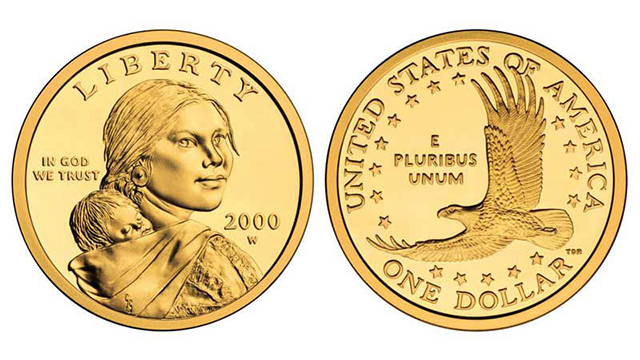Today in 1812, Sacagawea died at the age of 24. She is best known today as an interpreter for the Lewis and Clark expedition in the early 1800s, and little else is known about the rest of her life. History says that she was daughter of a Shoshone chief, and was born around 1788 in what we now call Lemhi County, Idaho. When she was was about 12 years old, she was captured by the Hidatsa, who were enemies of the Shoshone. The Hidatsa sold her to French-Canadian trapper Toussaint Charbonneau, who made her one of his wives. In November 1804, she was invited to join the Lewis and Clark expedition as a Shoshone interpreter, which she agreed to do despite being pregnant with her first child.
Biography tells us: “Despite traveling with a newborn child during the trek, Sacagawea proved to be helpful in many ways. She was skilled at finding edible plants. When a boat she was riding on capsized, she was able to save some of its cargo, including important documents and supplies. She also served as a symbol of peace — a group traveling with a woman and a child were treated with less suspicion than a group of men alone.” It’s arguable that without her, the expedition members might not have been successful.
We believe that Sacagawea died at Fort Manuel in what is now Kenel, South Dakota. Britannica says: “Shortly after the birth of a daughter named Lisette, a woman identified only as Charbonneau’s wife (but believed to be Sacagawea) died at the end of 1812 at Fort Manuel, near present-day Mobridge, South Dakota. Clark became the legal guardian of Lisette and Jean Baptiste and listed Sacagawea as deceased in a list he compiled in the 1820s. Some biographers and oral traditions contend that it was another of Charbonneau’s wives who died in 1812 and that Sacagawea went to live among the Comanches, started another family, rejoined the Shoshones, and died on Wyoming’s Wind River Reservation on April 9, 1884. These accounts can likely be attributed to other Shoshone women who shared similar experiences as Sacagawea.”
In honor of Sacagawea and her life, why not try this recipe that may be similar to what Native Americans ate when traveling. Omitting the sugar from this would make it acceptable for those who follow a low-carb or keto diet.
Pemmican
Ingredients
- Dried meat (buffalo, game or beef)
- Dried chokecherries (juneberries can be used as well) (use about the same amount as the dried meat)
- Sugar to taste
- Lard (to hold together) Do not use shortening or butter.
Instructions
- Pound meat very thin and dry in the oven.
- Grind the dried meat in a food processor.
- Add the chokecherries and blend together.
- The consistency should be dry and loose with fruit broken up.
- Add melted lard slowly while mixing.
- Two tablespoons of fat are used for each 4-5 ounces of meat plus 1/3 cup of fruit.
- Fat changes the consistency and makes it appear semi-moist instead of dry and improves the flavor and texture. Store in paper bags.
(Source: FirstNations)

